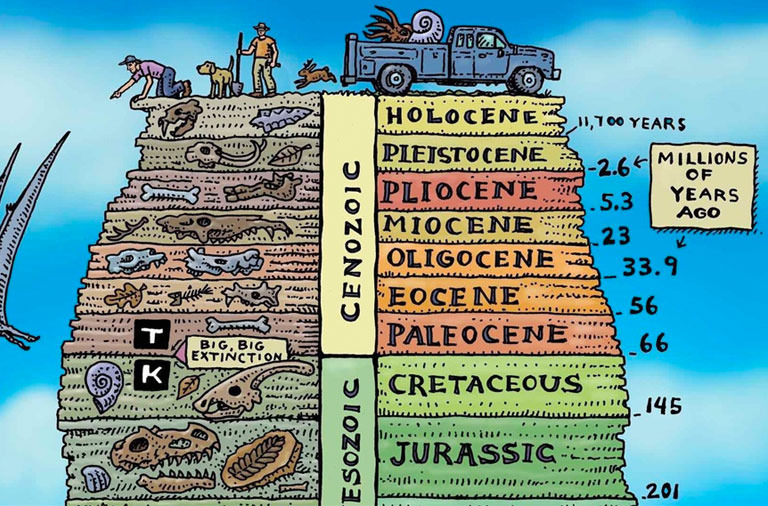Living in the Concretaceous Period
January 7, 2019

Dateline: January 1, 3019
Scientists long ago determined that Earth had entered the Anthropocene period, based on a determination that humans were altering fundamental planetary parameters such as biodiversity and the chemistry of the atmosphere and oceans to the degree that it warranted an entirely new geological designation. Following another millennium of observation and analysis, skilled observers now tend to divide the Anthropocene into brief but distinct phases, including the Concretaceous, the Hellocene, and the current Depletozoic—which began centuries ago and appears likely to persist until the next awful thing happens.
While biologists have long agreed that humans are the dominant lifeform of the Anthropocene, some geologists now argue that, during the pivotal Concretaceous phase, it was the automobile that served as the true apex species. It was for the sake of automobiles that concrete—the signature rock stratum of the Concretaceous—was laid down over millions of square kilometers of landscape. The automobile served as a kind of exoskeleton for Concretaceous humans, as well as a status symbol, and it was for the powering of automobiles that millions of years’ worth of ancient sunlight, stored in the form of petroleum, was wrenched from the ground and combusted—thus altering the climate and triggering the swarm of events that led to the second phase of the Anthropocene, the Hellocene.
This latter observation has led some historians to explore the evolution of the automobile, from the primitive Stutzes and Locomobiles that rolled the primordial roads of the early Concreteaceous, all the way to the sleek Teslas and other electric cars that began to proliferate just as the swiftly intensifying events of the brief Hellocene brought the Concretaceous to a hot, chaotic end. At the thin Concretaceous-Hellocene boundary, there is some evidence to suggest the nascent evolution of driverless automobiles—which might eventually have made humans themselves obsolete, had not the catastrophic dawning of the Hellocene marked the extinction of the automobile itself, as well as the disappearance of millions of plant and animal species and the near-extinction of humans.
So many puzzles remain. Why were humans in the Concretaceous phase unable logically to foresee the inevitable consequences of their collective behavior? Why were humans so fascinated by automobiles that they were willing to imperil so many other creatures? What was the function of the small rectangular boxes that late Concretaceous humans seemed to carry with them at all times? Were they merely generic votive objects, or did they enable communication with distant spirits, as legend insists? Perhaps we will never know. Ongoing research can still teach us much about the strange ways of the powerful but doomed people of the early Anthropocene.
Featured image: Geologic Eras by Ray Troll.
